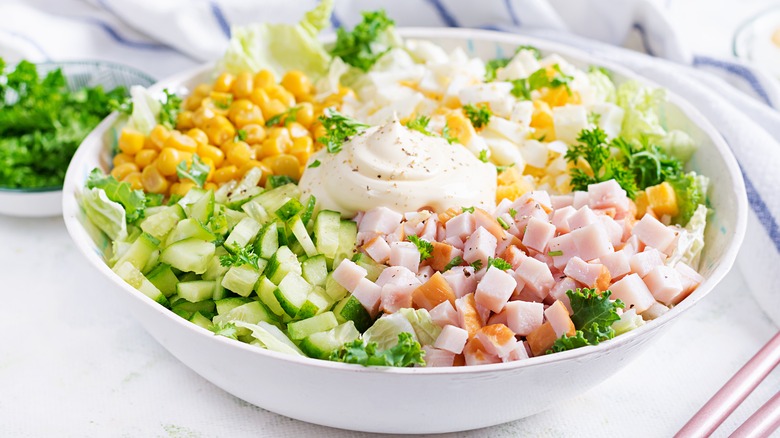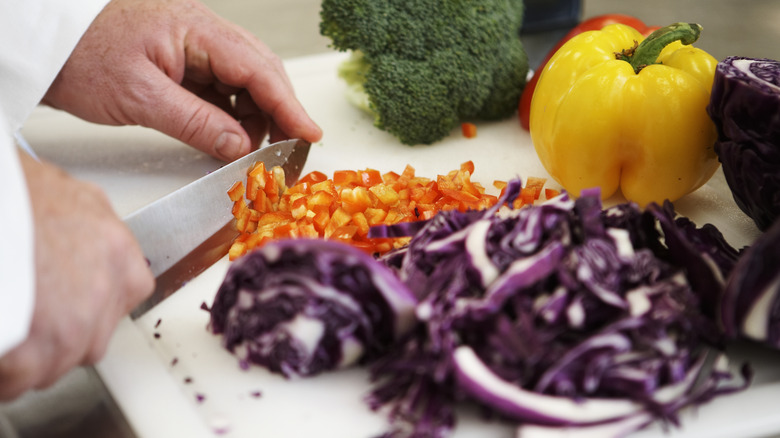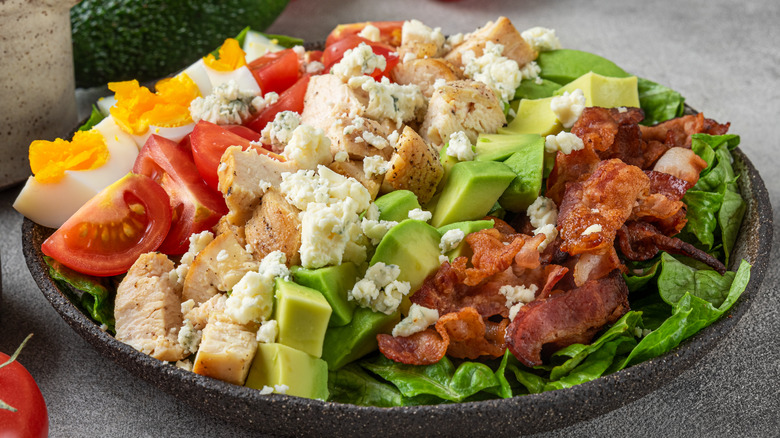For The Best Chopped Salad, Mind The Wet Ingredients
It's rare that somebody will say chopping a salad makes it worse, but it's not so easy making a perfect chopped salad. The reason the chopped salad is so universally loved is multifold: Firstly, it's easier to get all the flavors of a dish in one bite if the ingredients are all chopped to a similar size. There's even people who believe salad on a spoon is the most enjoyable way to eat the green stuff, citing that it's easier to snag as many of the ingredients into one bite as possible with the greater surface area. Plus, struggling to stuff a gigantic leaf of romaine in your mouth just isn't the most elegant way to dine.
All this said, a chopped salad isn't without its pitfalls. One of the biggest issues with chopped salads is the ingredients making it a waterlogged mess, but that's easily avoidable by being measured with adding moist ingredients, as well as adding any alternatives that may be less watery.
Downgrade the moisture
Chopped salad needs the right ingredients, the ideal dressing, and most importantly, it can't be soggy. When a salad is chopped, the small pieces of produce and mix ins can get bogged down with moisture. The way to avoid this is in the making of the salad itself. When making it, try to avoid implementing too many wet ingredients. Think of how watery tomatoes or stone fruits get when cut: they release that moisture in the salad, and can easily bog down small pieces of lettuce and other drier vegetables in the chopped salad.
Stick to alternatives that are less watery, but still filled with flavor. Ingredients like cherry tomatoes (just halve them and fold in right before serving), dried fruits like cranberries or cherries, among many other choices based on preference. Of course, be sure to properly dry all your washed produce to additionally cut down on moisture. Then it's time for the best part about chopped salad: all the tasty ingredients you can (and should) add into your salad bowl.
Let your tastebuds be your guide
A chopped salad can and should have a variety of ingredients, flavors, and textures in its makeup. Of course the base comes first: starting with some sort of lettuce is traditional, but go for red cabbage, a grain like farro, or even quinoa. Look to legumes like chickpeas or canned beans for fiber. Sliced nuts, raw bell peppers, diced cucumbers, leftover roasted vegetables, and crumbled or shredded cheese are all delicious in chopped salad.
When it comes to protein, stay away from more watery foods like canned tuna (though the thick fillets canned in oil tend to be less watery), and go towards other less moist-inducing ingredients like hardboiled eggs, poached or roasted chicken, and leftover salmon fillets. These all crumble or slice easily, have protein that makes a meal fulfilling, and of course taste delicious.
The last step is a salad dressing that pulls it altogether. This is of course where you want most of the moisture to come from. Whether you go for a zippy vinaigrette, a creamy ranch dressing, or something you make up on the spot, it will be well at home on the perfect chopped salad.


